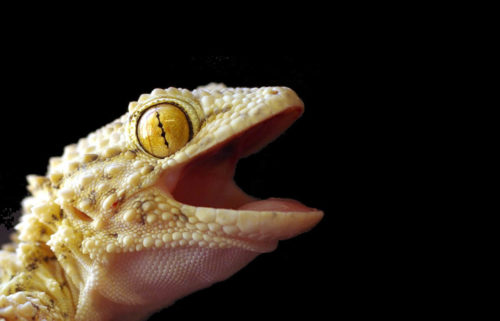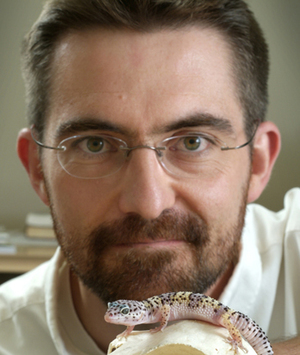
Ever stopped to wonder what those bumps on the back of a crocodile are made of? Or those plates of armour on an armadillo? Or the bumpy scales of a lizard?
They’re called osteoderms, small pieces of bone that grow directly within the skin. While many lizard species have osteoderms, little is known about how they grow, what they are used for, and why some species have them while others don’t.
Now a University of Guelph professor, working with an international team of scientists, seeks to answer these and many other questions.
Prof. Matt Vickaryous, Department of Biomedical Sciences in the Ontario Veterinary College, is one of this year’s recipients of the Human Frontier Science Program’s (HFSP) collaborative research grants. He will receive just over $200,000 in funding over three years.
He and three colleagues from the U.K. and France will work in their respective fields to launch the first multidisciplinary investigation of osteoderms, exploring their development, evolution and mechanical properties.
Using a range of methods, they will study these unusual skeletal elements at various levels, from individual molecules and cells, to how hundreds of osteoderms work together.
“Osteoderms are a long-overlooked component of the skeleton,” said Vickaryous. “Available evidence suggests that their development is unlike other bones, which begs the question why. And why are osteoderms common to some groups of lizards, but entirely absent from others? In some species they appear to function as a type of armour, but this might not be true for all lizards.
“If we can understand how osteoderms develop, it could even shed light on certain disease conditions.”

The research team will also probe how some lizards can regenerate osteoderms — perhaps leading to insights about bone repair and regeneration in other species.
In 2017, research by one of his PhD students revealed the type of stem cell that allows a gecko to regrow its tail. Now Vickaryous will focus on osteoderm regeneration.
HFSP research grants are awarded annually to diverse, international teams conducting groundbreaking research.
“This is a really unique opportunity. HFSP is very interested in generating novel collaborations between researchers from multiple countries and combining different disciplines to investigate complex and often risky questions in biology,” Vickaryous said.
“HFSP emphasizes innovative, cutting-edge studies of the life sciences with the aim of opening new horizons in biology, pushing fundamental science forward by leaps and bounds.”
This year, 34 teams will receive awards from an original 814 entries. Each went through a rigorous, year-long selection; 25 teams will receive Program Grants and nine will receive Young Investigator grants.
The team application involving Vickaryous was ranked third among the 25 grant awards.
He will examine the evolution, development and regeneration of osteoderms; other team members will study osteoderm function and microscopic composition.
Contact:
Prof. Matt Vickaryous
mvickary@uoguelph.ca